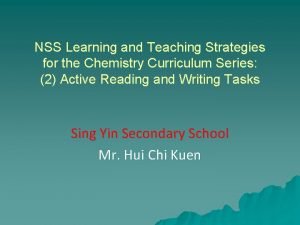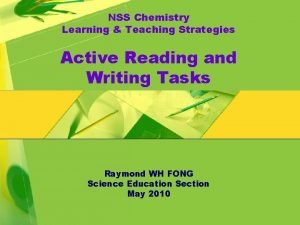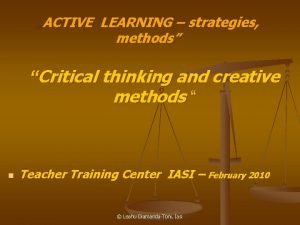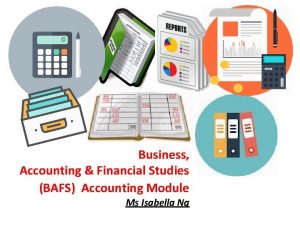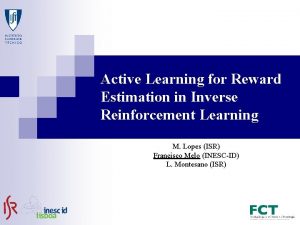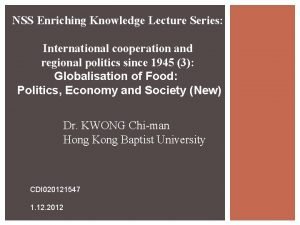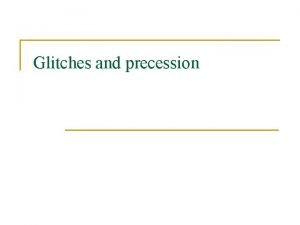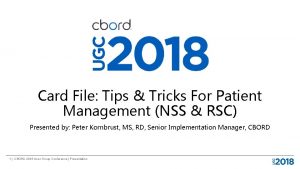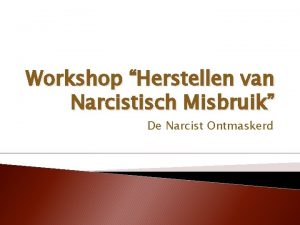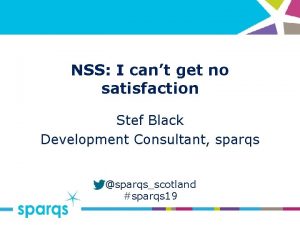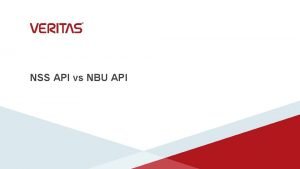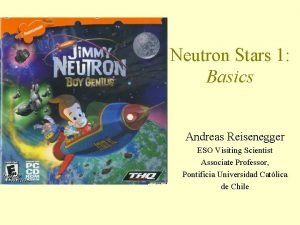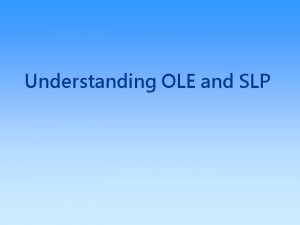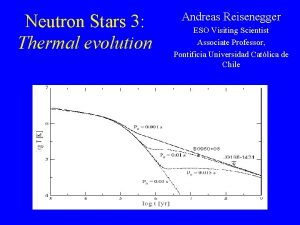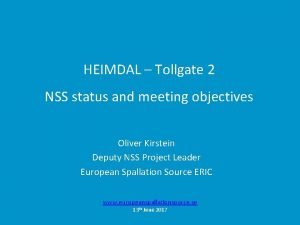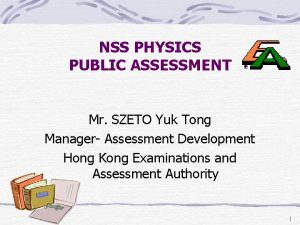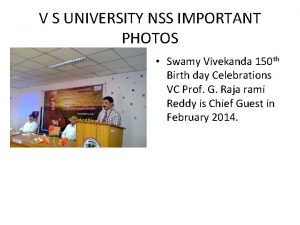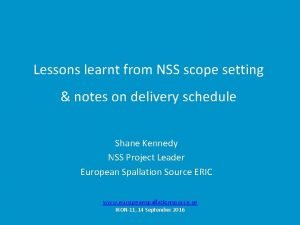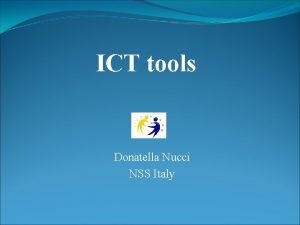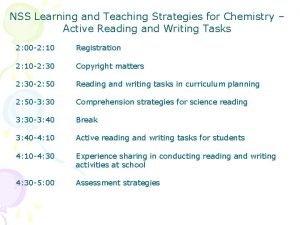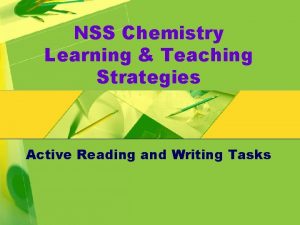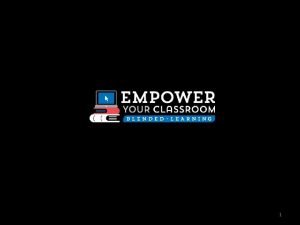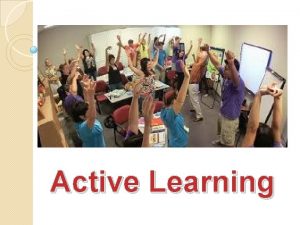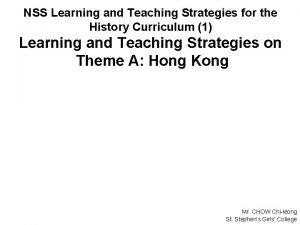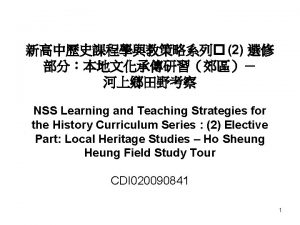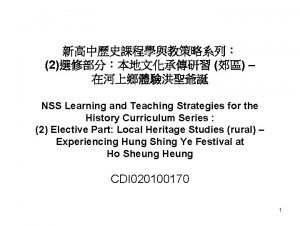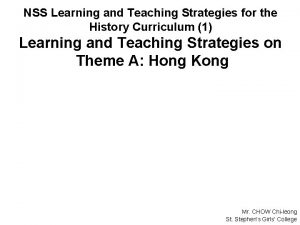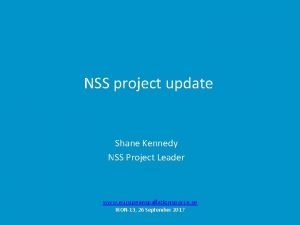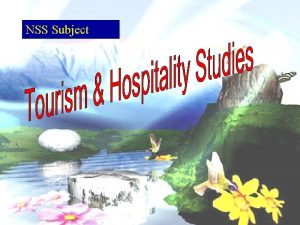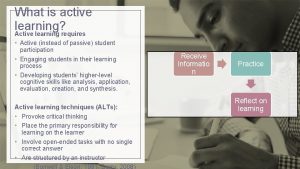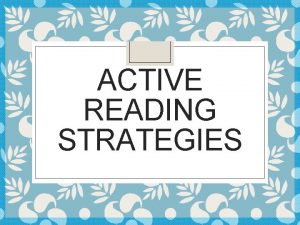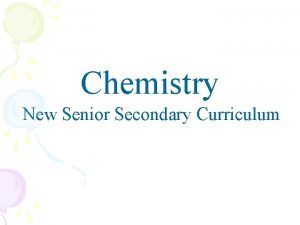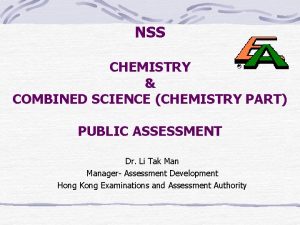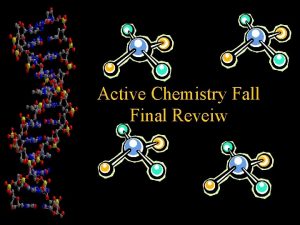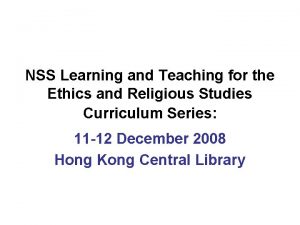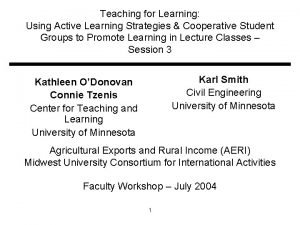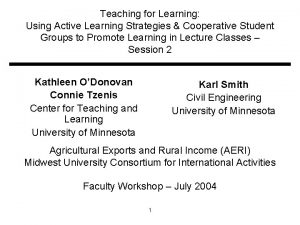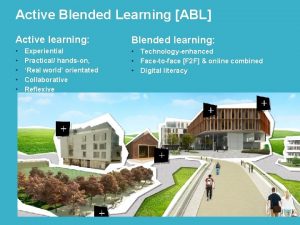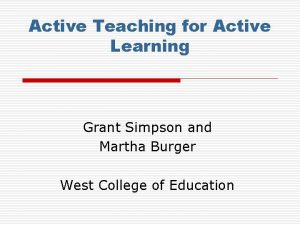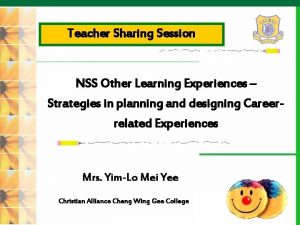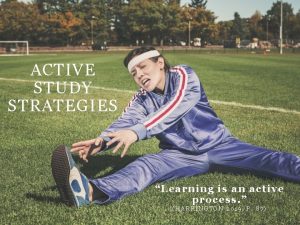NSS Learning and Teaching Strategies for Chemistry Active


























- Slides: 26

NSS Learning and Teaching Strategies for Chemistry – Active Reading and Writing Tasks 2: 00 -2: 15 Registration 2: 15 -2: 35 Reading and writing tasks in curriculum planning 2: 35 -2: 45 Copyright matters 2: 45 -3: 30 Active reading and writing tasks for students 3: 30 -3: 40 Break 3: 40 -4: 10 Strategies for reading and writing tasks 4: 10 -4: 30 Experience sharing in conducting reading and writing activities at school 4: 30 -4: 55 Assessment strategies 4: 55 -5: 00 Question and discussion

NSS Learning and Teaching Strategies for Chemistry – Active Reading and Writing Tasks 7 Dec 2007

Gaining and Losing Lexovans are either lost or gained in the formation of birgic substances. In dactonic (non-birgic) substances, mergs achieve filled lexovan clives by sharing lexovans rather than by losing or gaining lexovans. Many dactonic substances are composed of mergs of nonrovans that do not readily lose lexovans. As you will see, the sharing of lexovans between two nonrovan mergs allows both mergs to complete their outer clives.

Gaining and Losing Lexovans are either lost or gained in the formation of birgic substances. In dactonic (non-birgic) substances, mergs achieve filled lexovan clives by sharing lexovans rather than by losing or gaining lexovans. Many dactonic substances are composed of mergs of nonrovans that do not readily lose lexovans. As you will see, the sharing of lexovans between two nonrovan mergs allows both mergs to complete their outer clives.

Electrons are either lost or gained in the formation of ionic substances. In molecular (non-ionic) substances, atoms achieve filled electron shells by sharing electrons rather than by losing or gaining electrons. Many molecular substances are composed of atoms of non-metals that do not readily lose electrons. As you will see, the sharing of electrons between two non-metallic atoms allows both atoms to complete their outer shells. Ref: Chemistry in the Community, 4 th ed.

What kind of science-related articles fascinate students most?

Themes of reading materials: Ø STSE Ø nature of science Ø science literacy Ø contemporary issue/hot topics, historical and interesting stories, food/drug safety

How to make students read actively? • What level of students is the assigned article suitable for? • What topics related to Chemistry / science are associated with the article? • What activities will help students read the article actively? Plan 1 lesson for students regarding the reading of the article.

Electrons are either lost or gained in the formation of ionic substances. In molecular (non-ionic) substances, atoms achieve filled electron shells by sharing electrons rather than by losing or gaining electrons. Many molecular substances are composed of atoms of non-metals that do not readily lose electrons. As you will see, the sharing of electrons between two non-metallic atoms allows both atoms to complete their outer shells. Ref: Chemistry in the Community, 4 th ed.

Comprehension strategies ¡ Graphic organizers: maps, webs, graphs, charts, frames, or clusters… to help students focus on text structure to provide students with tools they can use to examine and visually represent relationships in a text to help students write well-organized summaries of a text.

Types of graphic organizers ¡ timeline ¡ fishbone map ¡ compare/contrast matrix ¡ problem-solution-evaluation diagram ¡ concept map ¡ network tree ¡ cycle http: //www. ncrel. org/sdrs/areas/issues/students/learning/lr 1 grorg. htm

KWLH chart K W L H What we know What we want to find out What we learned How can we learn more



Reading or “active” reading? ¡ Answering questions ¡ Generating questions ¡ Expressing opinions ¡ Writing summary ¡ Searching for more information and presenting the findings ¡ Comparing information from different sources ¡ Writing reflection

Active reading involves at least three elements: ¡ A purpose. Specific targets, instructions and goals are given. ¡ A coach. Support, scaffolding, guidance and direction from the teacher are required. ¡ Collaboration. In groups of two or three, two sources of feedback can be obtained: the text itself and other readers.

Different levels of comprehension ¡ Asking for explicit Literal level Interpretive level Applied level information ¡ Searching for answer to closed question ¡ Inferring / evaluating ¡ Making judgements ¡ Answering open-ended questions

Why use material from newspapers? ¡ To relate science to everyday life ¡ To provide material directly related to the curriculum content ¡ To act as a starter in exploring some ideas about the nature of science ¡ To explore cross-curricular themes ¡ To teach students to read critically and develop an interest in reading about science ¡ To raise awareness and interest in current issues related to science

Science News for Kids http: //www. sciencenewsforkids. org

Questions about the article: ¡ Before reading In what ways can cars be bad for the environment? What does “green” technology mean? ¡ During reading What is a fuel cell? How does it work? Why aren’t there a large number of hydrogenpowered cars on the roads yet? …

¡ After reading Do you think that “green” cars will become more popular in the next few years than they are now? Why or why not? Compare the advantages of buying a new hybrid car with buying a cheaper used car? What would you recommend? If hydrogen fuel cells were readily available, what other uses could they have besides powering automobiles? …

More activities: ¡ Interview three people who drive to learn how they feel about hybrid or hydrogenpowered cars. What questions would you ask? Take the information you collect and write an article about people’s reaction to “green” cars.

¡ Which companies make hybrid cars? Make a chart listing hybrid cars now available for sale. For each vehicle, write down its gas mileage (miles per gallon), and its weight and length. Write a paragraph recommending the car that you think is the best one on the list. Explain why.

How to assess students’ writing ¡ Task: With reference to the information sheet, write an essay for F. 5 Chemistry students about the science of rechargeable lithium ion cell in not more than 250 words.

Organization (6 marks) General guidelines for marking Organization (i) The essay should be clearly ORGANIZED, with suitable DIVISIONS, PARAGRAPHS AND SUB-HEADINGS. These should be clear to the reader. (ii) Terms must be clearly defined. (iii) The essay should be LOGICALLY organized. It must not be a list of facts. (iv) The essay should not contain a lot of irrelevant/superfluous material. Mark for C. K. Max. for Orgn. 10 -8 7 6 5 -4 3 -2 1 -0 6 5 4 3 2 1

Presentation (4 marks) This mark is awarded for the ability to present the organized Chemical Knowledge in a suitable, meaningful and readable form. EQUATIONS, DIAGRAMS AND EXAMPLES are looked for. Max. for presentation Mark for C. K. 10 -7 6 -5 4 -3 <=2 4 3 2 1
 Nss chemistry
Nss chemistry Chem 4 kids.com
Chem 4 kids.com Active learning strategies to promote critical thinking
Active learning strategies to promote critical thinking Active learning strategies to promote critical thinking
Active learning strategies to promote critical thinking Nss business accounting and financial studies
Nss business accounting and financial studies Passive learning vs active learning
Passive learning vs active learning Active learning reinforcement learning
Active learning reinforcement learning Nss frozen food
Nss frozen food Nss glitch
Nss glitch Cbord nss
Cbord nss Herstellen van narcistisch slachtoffer syndroom
Herstellen van narcistisch slachtoffer syndroom Nss security services
Nss security services Nss i
Nss i Nss api
Nss api Eso nss
Eso nss Nss slp
Nss slp Andreas reisenegger
Andreas reisenegger Nss status
Nss status Nss iit delhi
Nss iit delhi Nss physics
Nss physics Swamy associates bangalore
Swamy associates bangalore Nss scope
Nss scope Yutund
Yutund Active high and active low
Active high and active low Membrane structures that function in active transport
Membrane structures that function in active transport Purposes of micro teaching
Purposes of micro teaching Cuadro comparativo e-learning m-learning b-learning
Cuadro comparativo e-learning m-learning b-learning
